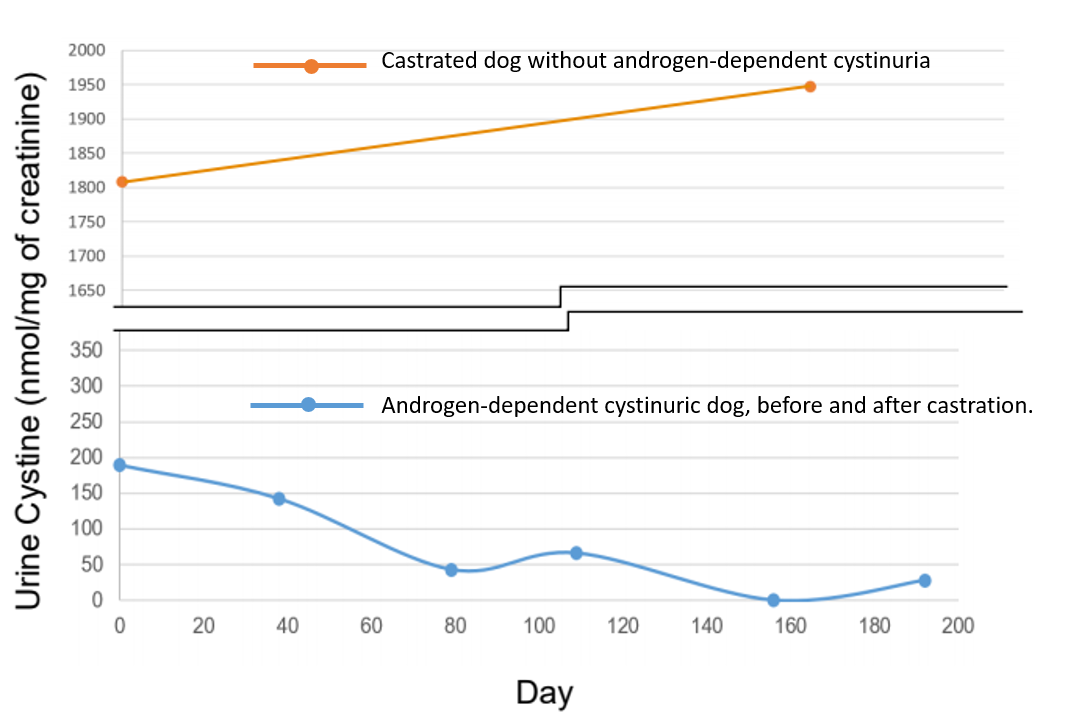Image of the month
How to calculate urine cystine:creatinine ratio?
Androgen-dependent cystinuria is a common cause for cystine uroliths in dogs that is effectively treated with castration. Genetic testing is available for Mastiffs, English Bulldogs and French Bulldogs. However, many other breeds without an available genetic test may also have androgen-dependent cystinuria. To identify these dogs, we compare urine cystine:creatinine ratios before castration and 3 to 6 months after castration. Figure 1 shows the changes in urine cystine:creatinine ratios in a castrated dog without androgen-dependent cystinuria and recurrent cystine uroliths (orange line that remains elevated) and an androgen-dependent cystinuric dog immediately before (time = 0) and after castration that never reformed cystine uroliths (blue line showing a gradual reduction.

A spot (random) urine cystine:creatinine ratio is a simple alternative to measuring 24-hour urine cystine excretion. To calculate this ratio the denominators in the concentrations of cystine and creatinine must be identical. If cystine is reported in nmol/ml and creatinine in mg/dl, convert the creatinine concentration to mg/ml by dividing the creatinine by 100 (i.e. one dl = 100 mls). Then divide the cystine by the converted creatinine concentration. For example, in a dog with a urine cystine (measured at UC Davis Amino Acid Laboratory) of 389 nmol/ml and a urine creatinine (measured at internal laboratory) of 206 mg/dl convert the creatinine to mg/ml (=206/100 =2.06). Divide the cystine (389 nmol/ml) by the converted creatinine (2.01mg/ml) resulting in a cystine:creatinine ratio of 188.8 nmol of cystine/mg of creatinine.
Learn more about canine cystine: